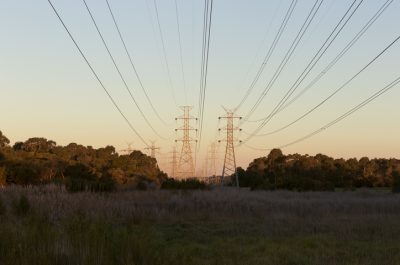The Financeability Fix
A few months ago ENA penned an article breaking down one of the critical challenges that transmission businesses face in financing the significant build of new transmission required to facilitate a least-cost energy transition for customers. The issue is referred to as the financeability of projects. In essence, this refers to the problem that arises when adding enormous projects (and sometimes more than one at the same time) to existing regulatory asset bases lowers cashflow relative to debt obligations in the early years of the project’s life. This constraint puts credit ratings under pressure and makes investors reluctant to invest unless they can see a clear regulatory fix or a government fixes the problem for them.
The AEMC’s recent Transmission planning and investment review found that current regulatory arrangements can give rise to financeability issues. The AEMC also suggested that the appropriate approach to addressing the problem is to adjust the deprecation profile for actionable Integrated System Plan (ISP) projects. The AEMC has also begun consultation on a financeability rule change submitted by Minister Bowen, and ENA has submitted a rule change request raising a few alternative approaches.
It is therefore a good time to take a closer look at the options to address this issue. As ENA sees it, the core objective of a fit-for-purpose regulatory framework for major new transmission infrastructure should be to deliver timely and efficient investment. It should address financeability issues in a manner that:
- brings forward enough cashflow to ensure the project can be financed, and
- provides investors with certainty, at the time they are reputationally and financially committing to a project, that any financeability issue will be adequately addressed.
This brings us to the options for addressing a financeability issue. We will only look at the different policy options for varying depreciation because most stakeholders agree that this is the most appropriate tool to address the issue. This approach leaves customers paying no more over the life of the asset, however, nearer term customers will pay relatively more than later customers.
There are two key decisions when designing an approach to varying depreciation:
- should the test be discretionary and able to be applied flexibly, or should it be mechanistic and set out in the rules? and
- should the test apply to the whole of the regulated business, or should it apply to the specific project?
Discretionary or mechanistic?
There are always trade-offs in policy. In this case, a critical trade-off is between the benefits of flexibility and of certainty. Flexibility can give the chance to adjust in a more agile way in the future. Certainty can provide all parties with clarity and predictability of outcomes. When making a choice of this nature between the two, the question should always be – which will most benefit customers over the long-term?
While flexibility to adjust for a transforming energy system is generally preferred, in this case, we think the benefits of certainty outweigh the costs for customers.
Both in aggregate and individually, a significant scale of new build is needed to transform the transmission system from a backbone from the coal fields to a central nervous system moving energy around a renewables and storage-dominated grid. The task is set out in AEMO’s ISP. Individual projects take years to plan and deliver. Delays in delivery give rise to significant costs for customers. Our 2022 article on analysis by Endgame Economics put some numbers on the cost of delay.
Traditionally, the economic regulatory framework for large transmission projects would comprise a sequential process including cost-benefit analysis and option selection, leading to an application for approval (from the regulator) of prudent and efficient costs to deliver the project (the contingent project application or CPA). Investors would decide to commit to delivering a project only after the CPA approval. Due to the scale of current projects and the need for speedy delivery in the context of the transition, this process is evolving into a staged process, with some stages (such as the delivery of early works and the detailed cost-benefit analysis) able to take place in parallel. Early works include activities like detailed planning and design, obtaining social license, and procurement of land and easements.
This evolution of the regulatory framework to rapidly deliver transmission investment is critical context for how financeability issues should be resolved. The timing of certainty in a financeability solution is critical. If transmission investors are to reputationally and financially commit to projects at the early works stage they must be confident that they can at the later ‘CPA2’ stage finance and invest in the project.
With respect to the timing of investor certainty, asking a transmission business to commit to early works without knowing its project is financeable would be like asking someone to put in an offer for a property without pre-approval from the bank.
For this reason, we prefer an approach that would require the regulator to run the ruler over each actionable ISP project, applying a formula set in the rules to make sure the cash flow profile of the project is financeable. When a transmission business is committing to early works on a project, it can satisfy its investors by showing them the spreadsheet applying the financeability formula. A far easier prospect (and one more likely to deliver timely investment outcomes) than to ask them to place their trust in a future regulatory decision which may, or, most critically, may not, address the looming financeability issue.
Regulated business or project?
Another important policy design choice is whether the test should apply to the whole of the regulated business or just to the project that is being undertaken. Here again the certainty and predictability of the outcome is important for transmission investors and for customers.
Let’s unpack the mechanistic options in ENA ‘s rule change proposal a little more:
- Option A (whole of business) – requires the regulator to apply a test ensuring that a benchmark efficient regulated business that undertakes the actionable ISP project can achieve at least a benchmark credit rating (BBB+) at the benchmark level of gearing (60%)
- Option B (discrete project) – requires the regulator to apply a test ensuring that the actionable ISP project, on a discrete basis, can achieve at least the benchmark credit rating (BBB+) at the benchmark level of gearing (60%), and
- Option C (no worse off) – requires the regulator to apply a test ensuringe that the proponent of an actionable ISP project would, after the investment, be ‘no worse off’ than its prevailing position under its post-tax revenue model.
Options A and C produce vastly different outcomes depending on the starting position of the business. For example, if the business has a starting point that is not financeable (i.e cashflow relative to debt is poor) then:
- Option A would bring forward more cashflow than is needed to ensure the financeability of just the project (because the test is remedying pre-existing issues), and
- Option C would not bring forward enough (because it is perpetuating pre-existing issues).
The table below shows the range of outcomes that can be expected depending on the starting circumstances of the business.
| Business starting position | Whole of business assessment | Discrete project assessment | ‘No worse off’ test |
| Poor cashflow relative to debt | More cashflow is brought forward than is required | Sufficient cashflow is brought forward | Not enough cashflow to finance the project |
| Sufficient cashflow relative to debt | Sufficient cashflow is brought forward | Sufficient cashflow is brought forward | Sufficient cashflow is brought forward |
| Healthy cashflow relative to debt | Not enough cashflow to finance the project | Sufficient cashflow is brought forward | More cashflow is brought forward than is required |
Option B produces the same outcome regardless of the starting position of the business. This, in our view, should be preferred over Options A and C. Thes options risk either:
- bringing forward more cashflow than is necessary, meaning near-term customers pay more than they need to, or
- not bringing forward enough cashflow, meaning a project that would provide benefits to customers does not proceed until either a regulatory or a government-led solution is found.
Final thoughts
The certainty and predictability of a mechanistic test, such as Option B, should be attractive for all parties. It fixes the problem under all circumstances and, importantly, does not result in perverse outcomes for customers in some circumstances.
As noted, under Option B, transmission investors would have the certainty to proceed at pace with the transition, applying sufficient capital to essential early-stage tasks such as obtaining social license for communities and landholders to host infrastructure.
More importantly, however, investments that benefit customers would not be held up more than they need to be to ensure they make sense, and the costs are prudent and efficient, lowering the risks and costs to customers of regulatory framework induced project delays.
There should also be some attraction in this approach for the regulator, who may prefer for the cash-flow profile of major projects to be set in a manner that does not require their discretion to be exercised (again potentially dragging out the regulatory process) on a case-by-case basis.
Governments are also likely to be attracted to the certainty that public funds, such as the Rewiring the Nation fund, will not be required to address cashflow issues for transmission investors and instead can be directed to reducing customer bills.
A pragmatic solution to financeability challenges would help the regulatory framework to stand on its own, without the need for ongoing government intervention, to progress major transmission projects in a timely and efficient manner. This is a critical piece of the complex puzzle required to progress the energy system’s transition to net zero at the pace required to meet emissions objectives and community expectations.

